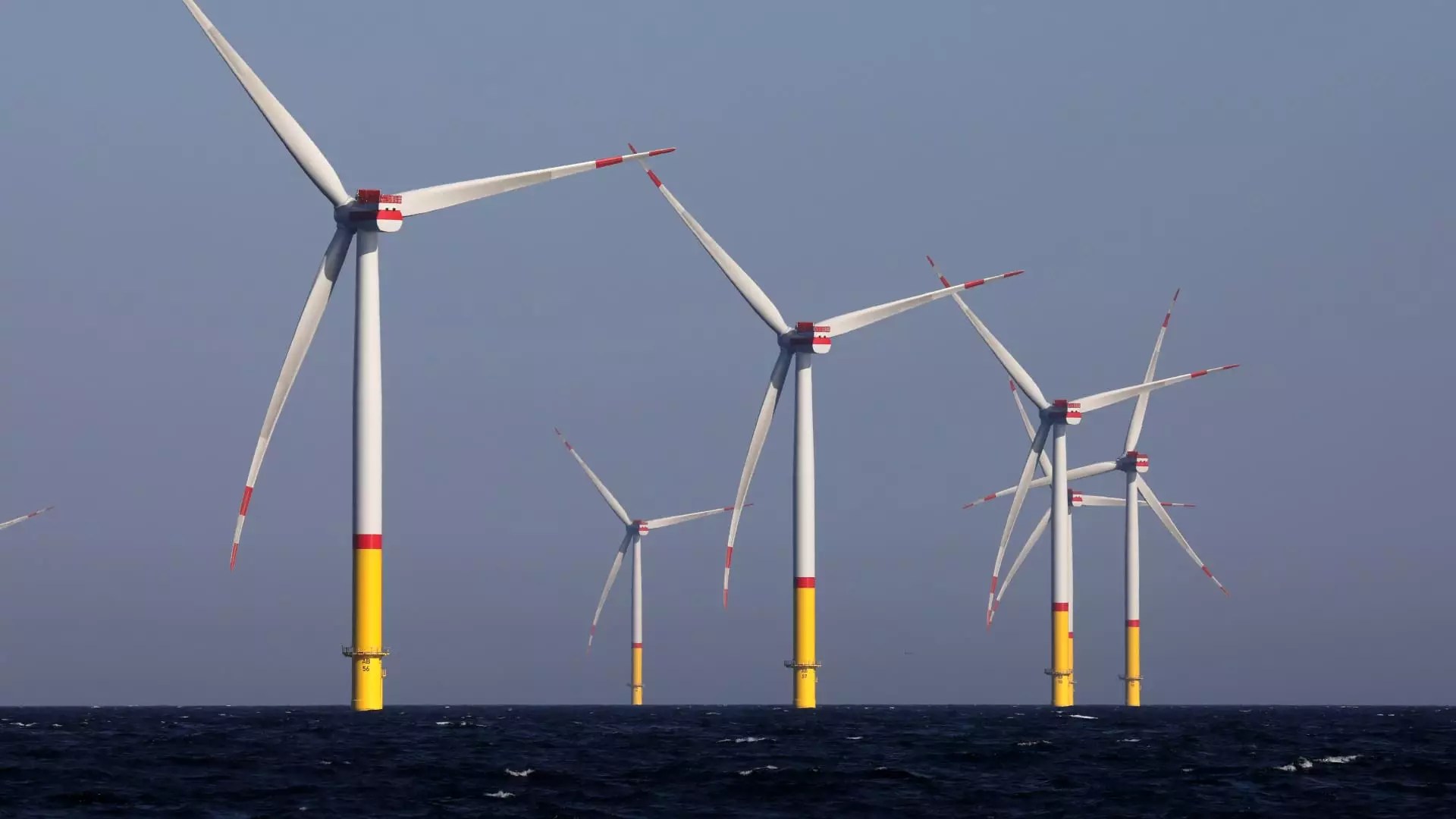The ongoing dialogue about energy resources in America has never been more critical, particularly with the resurgence of offshore wind energy projects like Equinor’s Empire Wind 1. With its construction now on track following a controversial halt ordered by Interior Secretary Doug Burgum under the previous administration’s influence, the implications of this project extend beyond clean energy. They touch on the very fabric of American political strife and the struggle for a cohesive energy strategy.
It’s rather fascinating that amidst rising global concerns about climate change and sustainability, the resumption of Empire Wind’s work is clouded by the backdrop of political contention. While the project was given the green light by the Biden administration after extensive assessments, one cannot ignore the lingering distress among energy investors. The stop-work order exemplifies a precarious balancing act between federal directives and local economic necessities. New York’s Governor Kathy Hochul’s inappropriate political jostling with the Trump administration only underscores the complexities that modern energy projects face. It’s becoming increasingly evident that political affiliation can unduly influence operational stability in crucial infrastructure projects.
Union Jobs and Economic Repercussions
Advocates of renewable energy laud the Empire Wind project, not just for its environmental contributions but also for the jobs it is poised to create. The pledge of 1,500 union jobs is a substantial carrot, especially in regions that heavily depend on traditional energy sectors. However, this form of economic advocacy isn’t without its complications. The immediate drive to bolster employment figures should not overshadow the larger discussions on energy independence, especially when the project is intertwined with a divided political narrative.
The administration’s insistence on moving ahead with projects like Empire Wind represents a calculated risk. The potential economic benefits could roll back the influential narrative pushed by anti-renewable factions, particularly those aligned with Trump who have long demonized such initiatives. But questions persist about the quality and longevity of these jobs once the wind turbines are up and running. Are we merely trading one dependency for another, without creating a sustainable employment environment that extends beyond temporary construction work?
Natural Gas: The Uncomfortable Elephant in the Room
What remains troubling about the Empire Wind project is the implicit tension surrounding natural gas. Governor Hochul’s avoidance of discussing natural gas when addressing the Empire Wind project is emblematic of a larger ideological conflict. While she emphasizes partnership with the Biden administration and private entities for new energy projects, a narrative emerges that conflates the efforts between renewable energy and natural gas—an equally important element in the mix for achieving energy security.
Secretary Burgum’s statement about the economic benefits derived from “clean American natural gas” must be scrutinized. Despite the consistent push from renewable energies, the political machinery seems unable to commit fully to a transition devoid of contradictions. Citing natural gas as a complementary resource raises critical questions about commitment to renewable infrastructure and a long-term sustainable energy framework. It represents a dichotomy that could undermine the very mission of projects like Empire Wind, which seeks to assert independence from fossil fuel reliance.
The Financial Investment and Risks Ahead
Equinor’s investment of $2.5 billion into Empire Wind is a bold proclamation of the company’s commitment to this new era of energy generation. The sheer scale and potential output of 810 megawatts of electricity, enough to power half a million homes, demonstrate a forward-thinking approach. Yet, the road to commercial viability in 2027 will subsequently require navigating evolving regulatory landscapes, potential opposition from various factions, and the unpredictability of economic variables driven by political changes.
Equinor’s Chief Financial Officer Torgrim Reitan’s strong words—calling the halt of construction both unlawful and unprecedented—reflect a deep frustration that resonates with many in the industry. The commitment to renewable energy sectors must confront the realities of financial and political landscapes that often transform in unpredictable ways. Investors in renewable energy need a clear and stable framework in which to operate—a challenge that the Empire Wind project and its peers regularly face.
The Bigger Picture of Energy Transition
Empire Wind is not merely a singular endeavor; it forms a crucial piece of the greater puzzle for America’s energy future. As debates rage on about clean energy, fossil fuels, and economic viability, projects like Empire Wind serve as a reminder that resilience is key in these trying times.
Success stories across other offshore wind projects on the Eastern Seaboard offer hope, but they also illuminate the challenges that can arise along the way. The motivations, political affiliations, and economic considerations surrounding these projects need to harmonize for a successful energy transition. In the end, building a clean, stable energy landscape must rise above partisan strife, but we must acknowledge that the journey will be anything but straightforward. The questions posed today will determine the legitimacy and longevity of the decisions made now, steering America towards a sustainable energy future or a regression into divisive political games.


Leave a Reply